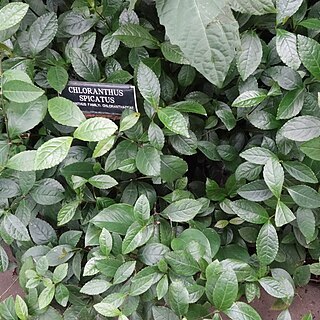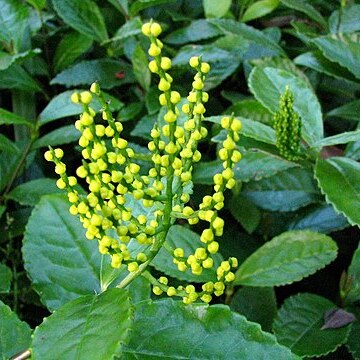Small glabrous shrub, 0.5-1.5 m, with ascending or ± spreading branches. Leaves oblong-ovate or ovate-elliptic to elliptic, 4-13.5 by 2-8.5 cm, rather obtuse or at least not or scarcely acuminate at the apex, cuneate at the base, rather coarsely crenate-serrate, nerves 4-6 pairs; petiole 0.4-1.2 cm; stipules membranous, linear, 2-3 mm, mucronate. Inflorescences terminal with 10-20 ascending spikes 2-5 cm long; peduncles 3-8 cm; bracts 1.5 mm; bracteoles 1 mm. Anthers 3, the central with 2 locelli and the laterals 1-locellate, the cells ±0.5 mm long. Fruit green or yellowish, 4 by 2 mm, narrowed at the base.
A small shrub. The leaves are opposite and have teeth around the edge. They are oval or sword shaped and taper to the tip. The leaves are fragrant. The flowers are in spikes. They are greenish white and at the ends of branches. The fruit are white berries with black spots. The small flowers look like millet and smell like cymbidiums.


